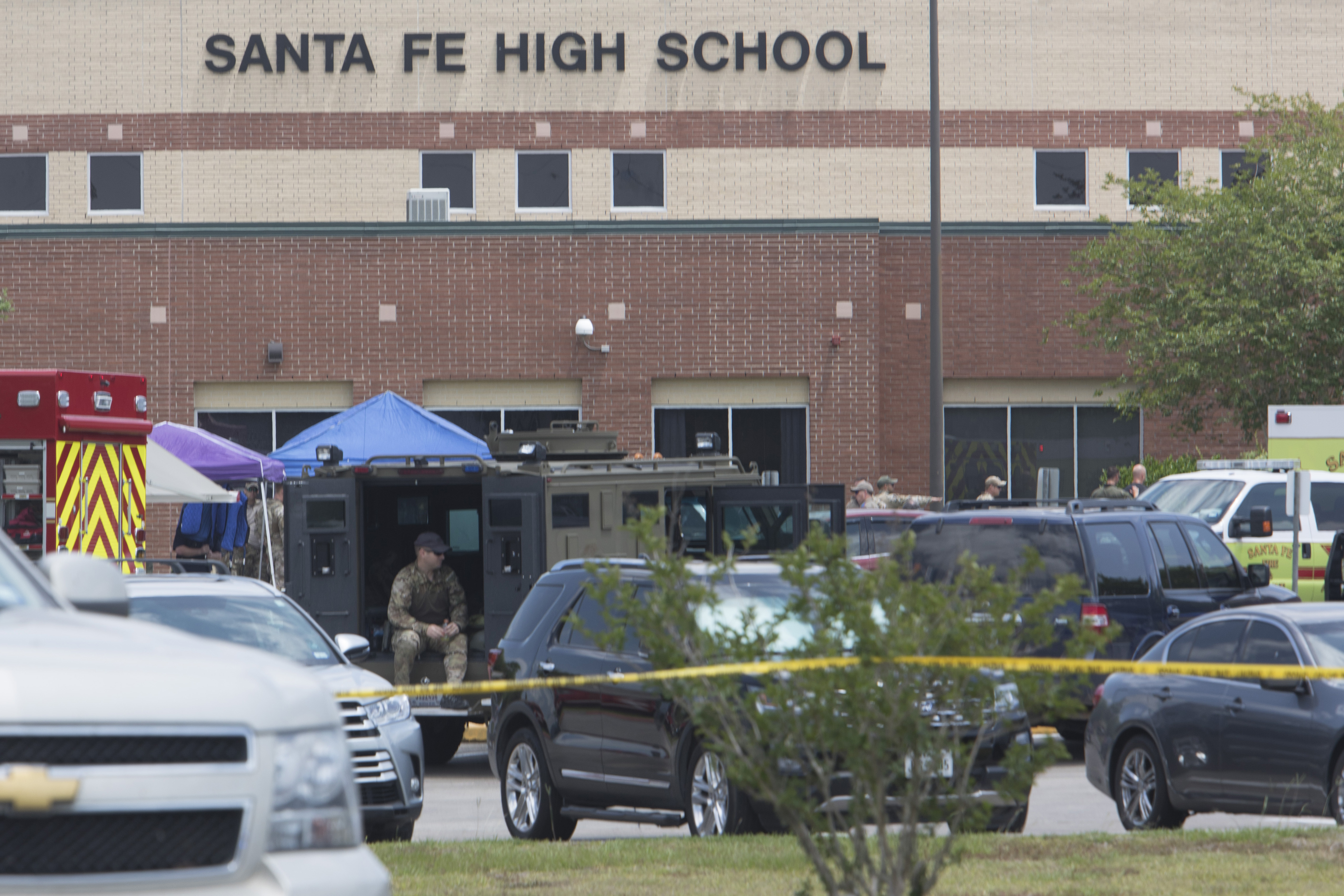The relentless cycle of school shootings in the United States
Photo: () | ©AFP
Santa Fe (United States) (AFP) – The United States is the only developed country in the world that suffers from a relentless cycle of school shootings, such as the rampage that took yet more lives at a Texas high school on Friday.
Ten people were killed and another 10 injured when a student armed with a shotgun and a revolver opened fire just as classes were starting at the school in Santa Fe.
There is roughly one school shooting a week in the United States, according to Everytown for Gun Safety, an organization that is pushing to limit the proliferation of firearms in the country.
US schools have become less and less a safe havens for children, as the country grapples with an epidemic of gun violence that claims around 33,000 lives each year, and many Americans appear fatalistic.
Unless there is a high body count, most school shootings don’t even make the national press.
According to a database compiled by the Washington Post, more than 214,000 primary and secondary school students have experienced a school shooting in the United States since 1999.
At least 139 students, teachers and others have been killed over the same period.
The familiar television images of students fleeing for their lives across playing fields, or tearfully recounting their near-death experiences, prompt the inevitable same questions: Should all schools have security gates? Should teachers be armed?
Just three months ago, in February, a young man armed with a semi-automatic, assault-style weapons killed 17 people at his old high school in Florida.
That particular rampage, in a school whose surviving students spoke out movingly and articulately against gun violence, prompted a fresh movement to demand legislation that would impose stricter controls on firearms.
That led to a wave of marches across the country and overseas on March 24 that brought as many as two million people on to the streets to demand action.
The hundreds of thousands of school kids were portrayed as the “school shooting generation” or the “Columbine generation,” named for the school where two students in Colorado gunned down 12 of their schoolmates and a teacher in 1999.
Yet there has been no progress towards legislation that would dent the rampant gun violence, aside from a few minor measures introduced in a handful of states. President Donald Trump himself has proposed arming teachers.
– Disturbing trends –
The actual definition of what constitutes a school shooting varies, hence the difference in the reported numbers of such incidents.
But the simple fact remains that there are far more of them in the United States than in the rest of the developed world, and the long-term trends are disturbing.
The Federal Bureau of Investigation carried out a study of “active shooters” between 2000 and 2013 and found that the numbers of mass shootings are on the rise nationwide.
In 70 percent of cases, the killings and injuries occur within five minutes or less, giving law enforcement a very short time to react.
And 24.4 percent of all gun rampages take place in schools or other educational establishments.
Shooters who open fire in schools or colleges are, for the most part, students or former students, as was the case in Santa Fe on Friday.
And the FBI also notes that school shootings are becoming deadlier.
Some of the more prominent attacks have had a lasting impact on the national psyche, such as Columbine in 1999, Virginia Tech in 2007 or the Sandy Hook massacre in 2012, when 20 kids aged between six and seven were shot dead by a gunman.
Since that slaughter, emergency “active shooter” drills have been stepped up in schools to prepare students to react when a gunman attacks their classroom.
Disclaimer: This story has not been edited by Siliconeer and is published from a syndicated feed. Siliconeer does not assume any liability for the above story. Validity of the above story is for 7 Days from original date of publishing. Content copyright AFP.


